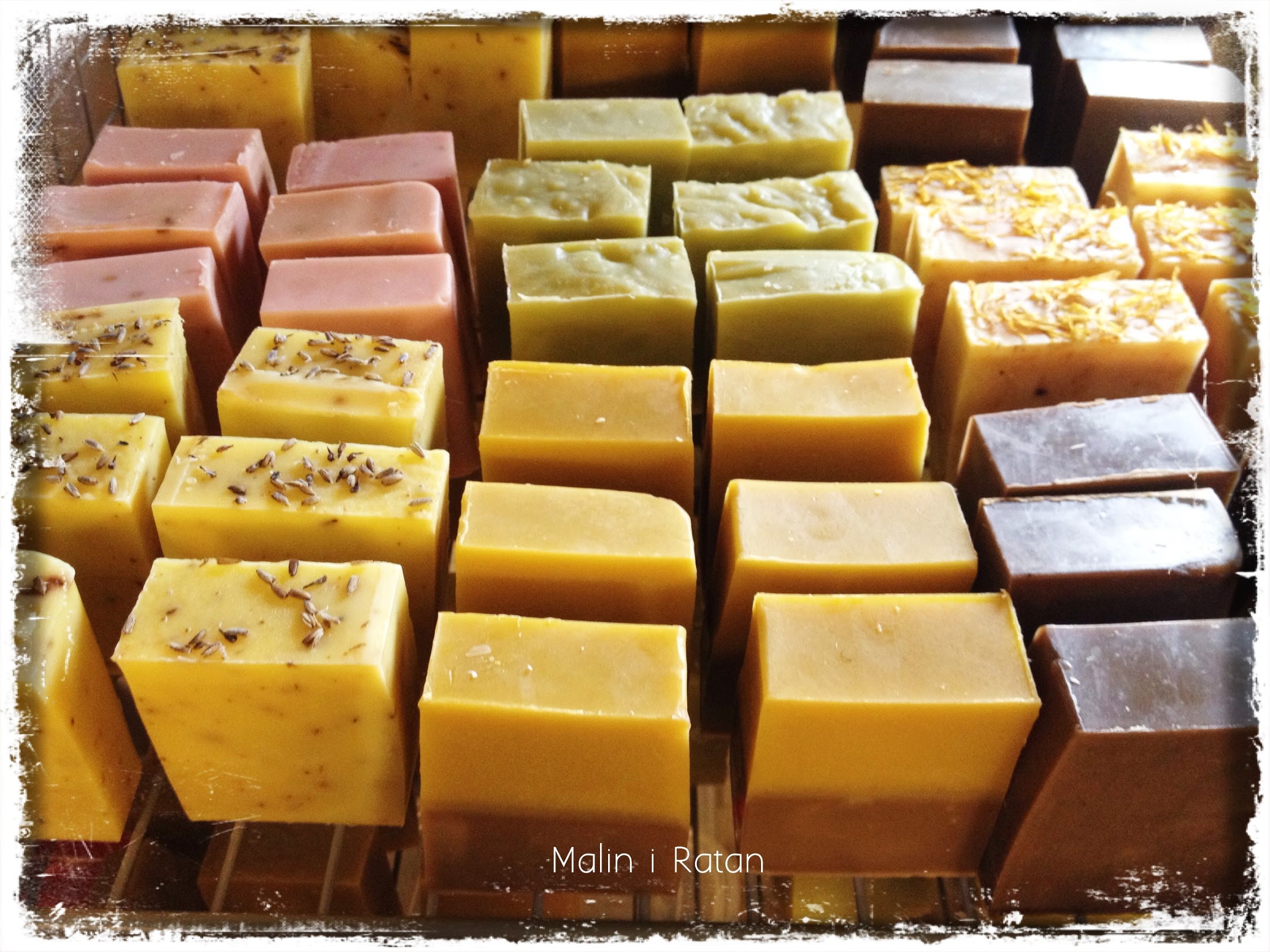Artisan manufacturing

When we create a cold-stirred soap, we start by considering the recipe: which oils we choose, control how the bubbles should look and how hard the soap will be, and how should it smell, should it be scrubbing? We select the oils, and the clays, mineral pigments, ground herbs, herbal teas and spices that will give the soap its properties and its colour. We also choose whether the soap should be fragrance free or with the scent of essential oils.

First, we measure and weigh the ingredients, mixing the oils and lye, mix in what gives texture, colour, and scent, and then pour it all in moulds, letting the saponification take place overnight.



We then cut the soaps by hand, and after they have dried for a few weeks, we wrap them.

The big difference between soaps produced industrially and my artisan soaps is that my soaps still contain their glycerine. Industrially manufactured soaps are often subjected to a process of removing the glycerine that forms naturally during the saponification. The glycerine is then used for cosmetics and foods, and the soap that remains is no longer mild and nourishing. In addition, the soap often gets ugly cracks because the softening glycerine is gone. In our soaps, of course, all the glycerine remains. Our soaps are also super-greased, both with the glycerine and extra fat, which makes so many customers happy returning to purchase more of my handmade eco soaps. Read more about different ways to make soap bars on the blog Nyponros.com

Soap is often made from animal fats, such as sebum and lard. We only use organic vegetable fat in our soaps – the main ingredient is Swedish cold-pressed rapeseed oil.